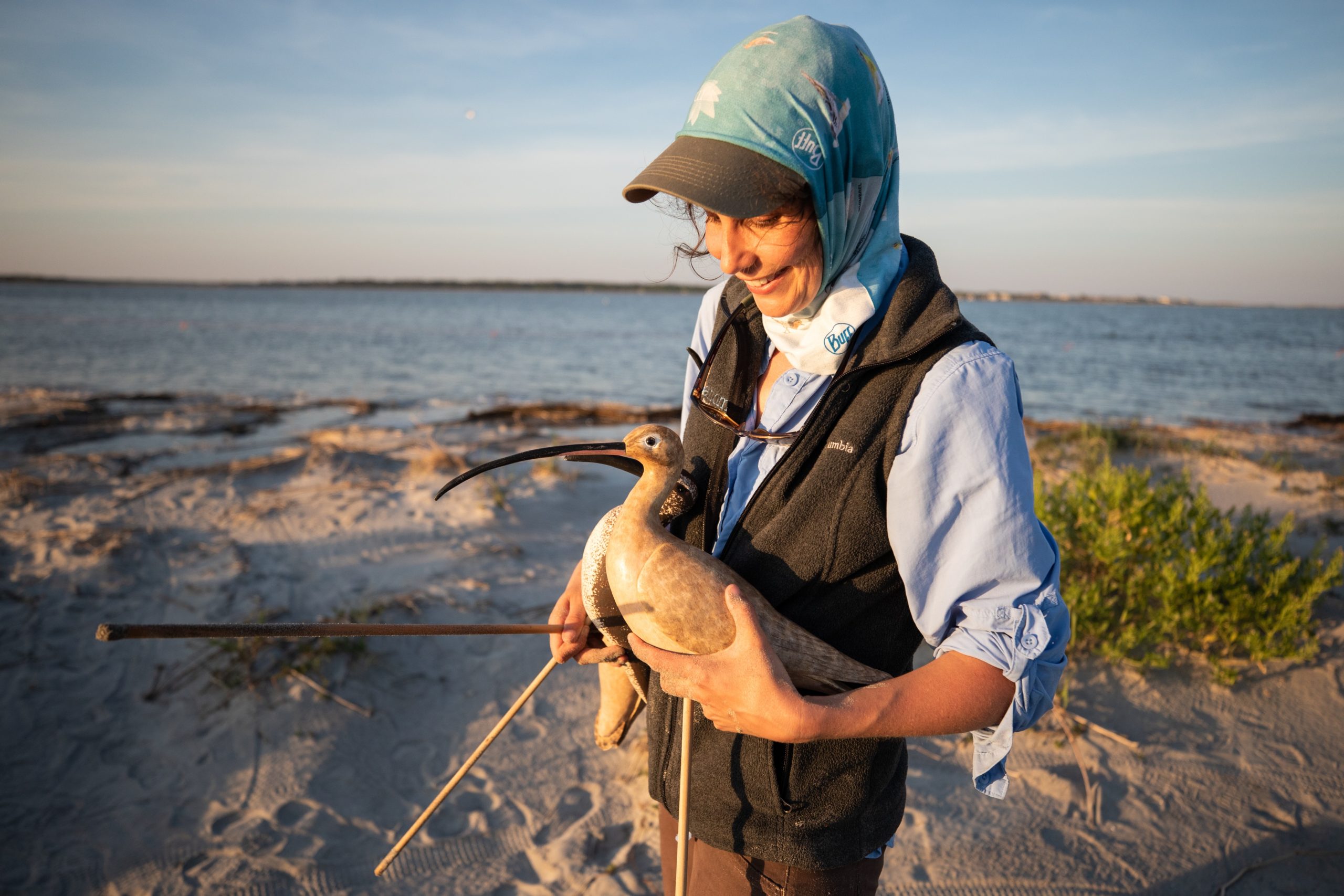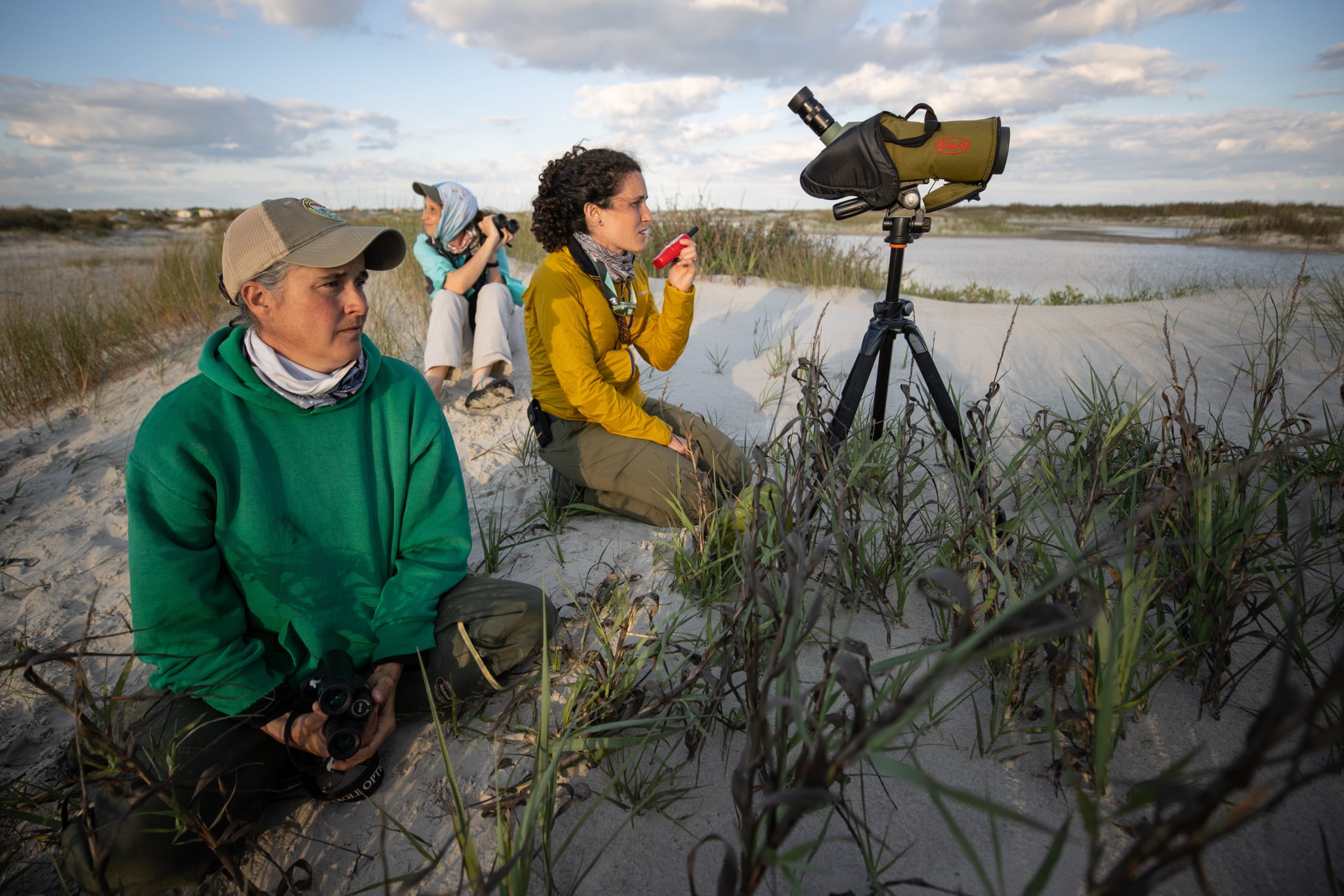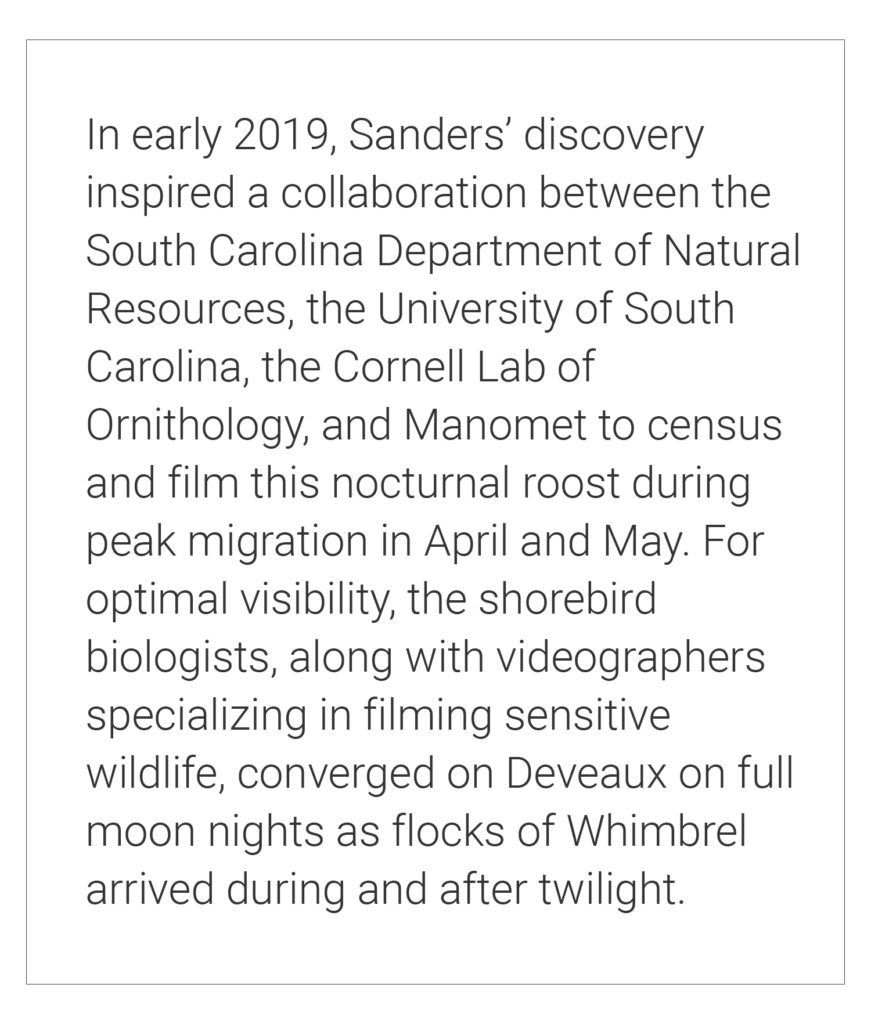It’s not every day that someone discovers a new-to-science bird migration spectacle. It’s even more unexpected that such an encounter – in this case, tens of thousands of Whimbrel gathering during their annual journey north – would be just a stone’s throw from a metropolitan area.
Deveaux Bank is a small, horseshoe-shaped island located at the mouth of the North Edisto River in Charleston County, South Carolina. Scientists have long been aware that it is an important place for birds. The island hosts a huge colony of pelicans that nest there, significant numbers of American Oystercatchers, and many other shorebirds and seabirds. But, what South Carolina Department of Natural Resources (SCDNR) biologist Felicia Sanders and a team of researchers, including Abby Sterling, Director of Manomet’s Georgia Bight Shorebird Conservation Initiative, confirmed in May 2019 was truly surprising.
After spending three evenings counting on the island, Sanders and the team confirmed that approximately 20,000 Whimbrel were roosting at night on Deveaux Bank during their spring migration. The team documented similar numbers again in 2020. This single flock includes nearly half of the declining shorebird’s estimated eastern population: a staggering spectacle hiding in plain sight. The findings were recently published in the peer-reviewed scientific journal Wader Study and The New York Times.
“Felicia has been working hard for a long time to protect this island for the many birds that use it as critical habitat,” says Abby. “In 2014, she happened to be on the island at a different time of day than usual and noticed flocks and flocks of Whimbrel — it was totally unexpected. In 2019, I participated in a coordinated count. We sat at staggered spots on this horseshoe-shaped island, recording all the Whimbrel that landed. Afterwards, we called out the counts from our data notebooks to Felicia and she tallied it all up. And we had this mind-blowing number of Whimbrel. This was, I think, the first real systematic count of Whimbrel on Deveaux.”





 Back to all
Back to all


